How to Convert Blog Readers Into Customers

How to Convert Blog Readers Into Customers
Contributed ContentLearn how to use blog posts to attract your target audience and lead them through the sales funnel directly to the purchase step.
Each blog post that you create, when used correctly, can be an effective conversion tool. One study from Demand Metric shows that blogging can help you get up to 67% more leads. By using the power of targeted content that guides readers through the sales funnel, you can successfully convert your audience into customers.
This article outlines the steps to create the right content for the right people, stimulating purchases. These steps are:
- Integrate your blog into the sales funnel
- Attract visitors who are likely to convert
- Guide readers through the sales funnel
1. Integrate Your Blog Into Your Sales Funnel
The majority of brands admit that blogs help them generate new leads, so companies should make include blogs in their sales funnels.
The traditional model of the sales funnel states that the number of your potential customers gets smaller with every step as a small number gets closer to a purchasing decision. You can find a diagram of the sales funnel and its phases below.
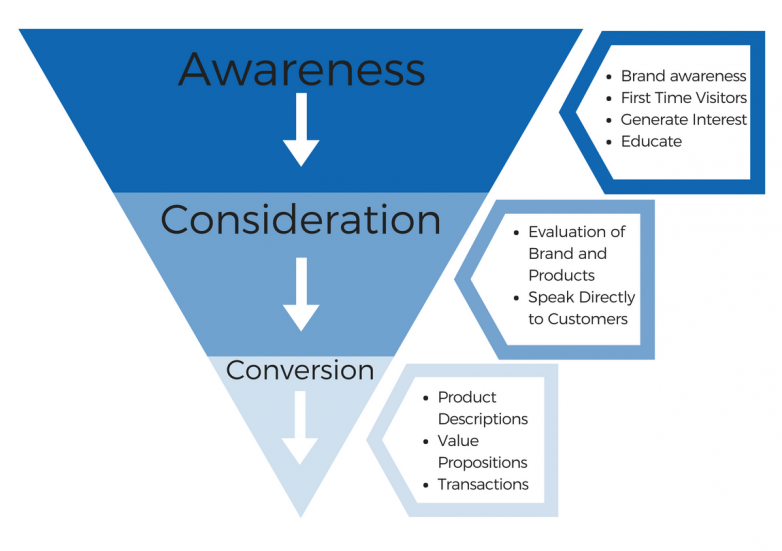
Source: Fourth Source
The top of the funnel represents all the people aware of your brand and the problem that you address. Then, the people who are actually interested in your brand and consider purchase go further to the middle of the funnel. Finally, even fewer people make a purchase at the final step – the bottom of the funnel.
Marketers create the perfect conditions to move leads through the funnel in the shortest amount of time. According to statistics from HubSpot, 81% of businesses say that their blog is important or critical for lead generation.
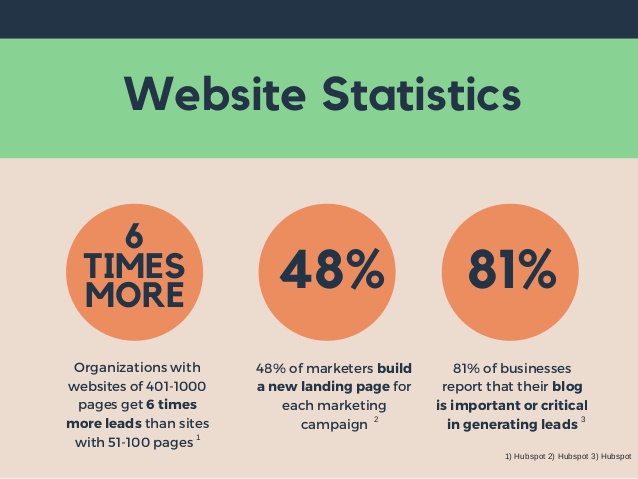
Source: SMB Lead Generation Stats & Basics
Blogs are also an opportunity to add pages to your website. The graphic above shows that company websites with 401-1,000 pages get 6 times more leads than sites with fewer than 100 pages.
What are the roles of content marketing and blog posts in the process? Blog content best fits the awareness step of the sales funnel. Blog posts generate interest in your brand while addressing the problems and needs of your target audience – problems they might not even know they have.
If your content shows that a reader has a problem that your brand can solve and raises trust in your products, it stimulates your leads to move further through the sales funnel.
2. Attract Visitors Who Are Likely to Convert
Not all of your blog’s readers can be converted. Consider that some percentage of your readers came to your website by accident and are interested in your content instead of your products. To attract costumers most likely to convert, you should:
- Visualize your ideal customer
- Use analytical tools
- Show your products' value
Visualize Your Ideal Customer
First, understand the purpose of your product and define the product’s target market. Some products are made for a small niche group. Other products are meant for a broader audience. To identify your ideal customer, you should create a buyer persona that answers the following questions:
- Where are my customers located?
- What are my customers' professions, hobbies, and interests?
- What are my customers' pain points? What problems do they face every day?
By answering these questions, you will get an understanding of who your prospective customers are, what they are looking for and how you can influence their behavior.
Sometimes your average visitor behavior can be very different from the customer's. It's important, therefore, to focus your content on your customer instead of the average blog visitor.
Use Analytical Tools
When thinking about the topic of your next blog post, consider what type of post would interest your potential customers.
Buyer personas provide a starting point for brainstorming a topic. Now you can target your content based on the information you’ve already gathered about your prospective customers using the following tools:
- Google Analytics is used to identify the most popular posts – the ones that have the highest number of views and the highest engagement rate.
- BuzzSumo analyzes your content or the content of your competitors to find the most popular posts in your niche.
- Google's “People Also Ask” Box helps find related topics and questions.
- Google's Keyword Planner and SEOchat's Related Keywords can find out what other queries are related to your keyword core. Most of your readers find your blog through Google and search queries. By using the same keywords that your readers use, you increase your visibility for the right audience.
Your blog's style also matters. If you have just started a blog or want to improve an existing one with low conversion rate, you must pay attention to style, grammar, and brand voice.
Many companies hire freelance writers from platforms like EssayTigers to write posts in different styles and find the one that works the best.
Show the Value of Your Product
In order to promote your product properly, it’s essential to know what difficulties your readers face in their lives and what they would like to change. If you can address the problems that occur in your readers' lives (even if they are not fully aware of these problems) and offer them your product as a solution, it will automatically become desirable.
To show the value of your product first consider the customer awareness scale, shown below. Customers in the "product aware" range are aware of the problems they want to solve and will be receptive to your product showcase.
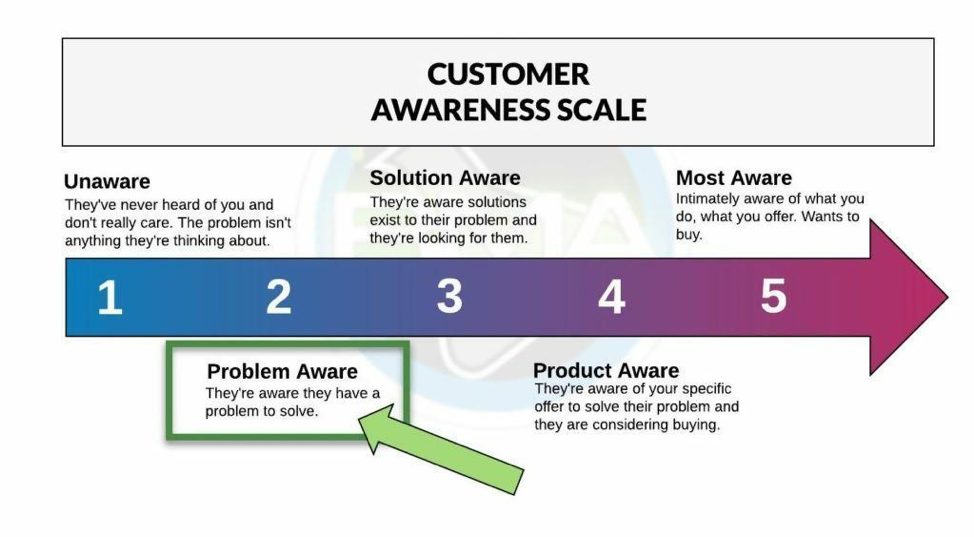
Source: Blog Marketing Academy
You can spread awareness of your brand and the problem that you address by covering topics related to your core keywords. For example, if you sell educational toys, you can post content on child-raising or physical and emotional child development.
By showing the value of your product and the way it changes the lives of your customers who have already tried your products out, you improve the reliability and help more readers move through the funnel faster.
3. Guide Readers Through the Sales Funnel
Blog posts are most effective at the top of the sales funnel where brand awareness is generated. This introduces your readers to your brand through valuable, informative content.
If targeted correctly, blog content attracts a lot of leads who might not be ready to make a purchase yet, but can be guided through the funnel to become a customer.
Top-funnel content must:
- Spark interest new readers
- Educate or entertain your audience
- Encourage readers to visit again
- Request that readers share contact information
If you were able to get contact information from your readers, you can then continue guiding them through the sales funnel with more in-depth, personalized, and targeted content, such as how-to guides, follow-up letters, white papers, and case studies.
Remember that top-funnel content covers a broader audience who don’t always have an apparent need to purchase. Pushy sales content might drive this audience out of the funnel.
Prioritize creating content that is readable, valuable, and compelling in order to spark interest – and not scare these customers away.
Pair Blog Posts With Lead Magnets
A lead magnet is an incentive offered to visitors in exchange for their contact information in order to grow an email list. It is usually something that your visitor will be glad to get for free - a free eBook, webinar, podcast, trial version, master class, etc.
If you want to use this tool for your blog, it's essential to choose those which lead magnet will bring the best result.
To identify lead magnets you can use, you should:
- Use the same lead magnets that your competitors do
- Ask for readers' opinions
- Analyze your most popular content
Consider providing free e-books, guides, webinars, courses, or other products and services as your lead magnets and measure return on investment to evaluate the effectiveness of your content.
AnyTime Fitness's blog, for example, features a sidebar that features call-to-action buttons acting as lead magnets. Readers have the option to click on the sidebar offers, which include training plans and a gym pass, and exchange their information.
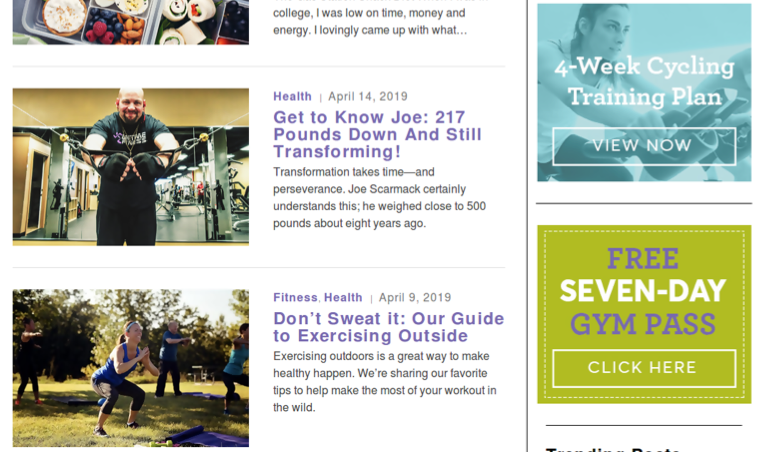
Source: AnytimeFitness Blog
Placing lead magnets right in your text or in a sidebar, like in the example above from AnytimeFitness, is a highly effective purchase stimulating tactic that helps make ordinary content into a converting one.
When creating content for a commercial blog, it’s essential to remember your final goal – purchase.
Use a Call-to-Action
It's hard to find a blog without calls-to-action (CTAs), which is not surprising as CTAs are effective at converting customers. T
Popular travel blog The Blonde Abroad, shown below, features CTAs in the form of buttons encouraging readers to “Learn More” about sponsored travel credit cards.
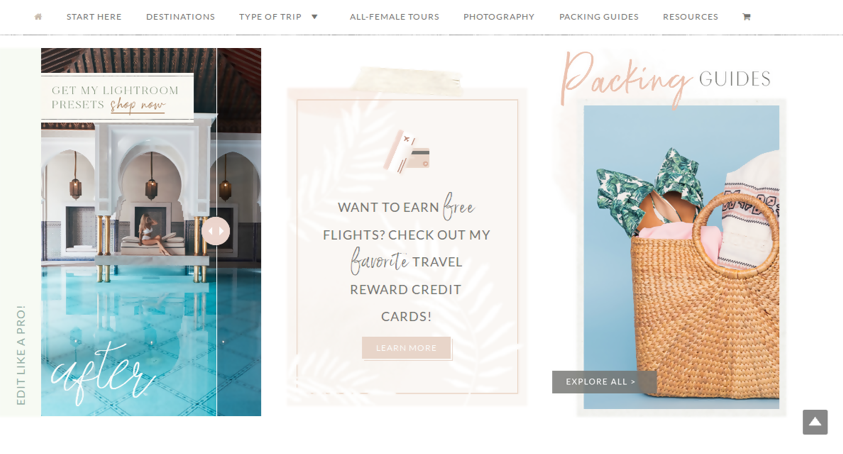
Source: The Blonde Abroad
The call-to-action shown above is seamlessly integrated into the website’s design and theme, making it stand out without disruptive the users’ journey on the website.
CTAs are great for all types of buttons and links. Make them relevant and attractive to your readers while considering their interests.
Other CTA copy examples include:
Sparking interest with unique content or incentives:
- Learn more from our e-book
- Get a free webinar
- Request a guide/infographic
- Try a free demo
- Get a discount code
Encouraging purchase:
- Add to cart
- Request a quote
- Click to shop
- See related products
- Order now
On cooking blog Love and Lemons, shown below, there is a yellow CTA next to the post content inviting readers to subscribe to the blog for more updates.
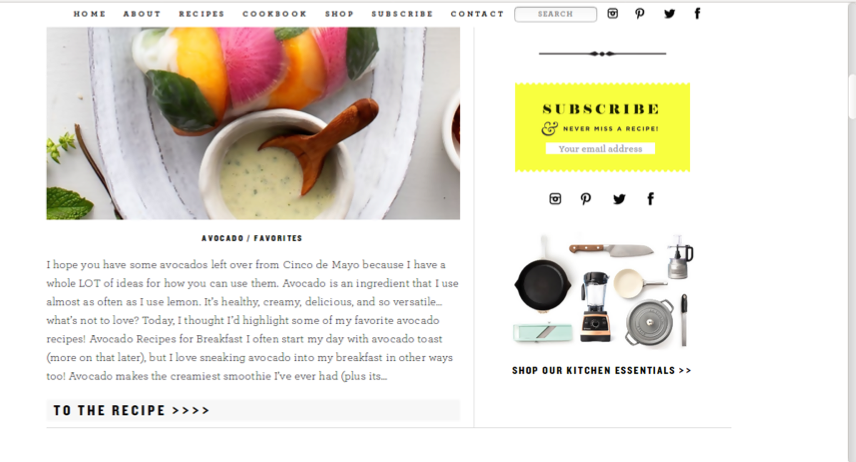
Source: Love and Lemons
Love and Lemons puts the CTA in the right place on the page, in a sidebar. Placing CTAs where they will not obstruct your content makes your website more appealing to readers.
Lead magnets and CTAs are the final steps for converting blog readers into customers.
Drive Conversions With Exceptional Blog Content
Blog posts are incredibly effective for winning over distracted audiences’ attention with targeted content. Companies should understand how to create high-quality content by considering buyer personas, defining what reader problems to address, and working with audience pain points.
Create effective and powerful content that converts by learning about your audience’s interests and needs. This will help you develop an effective content strategy to turn readers into customers.
